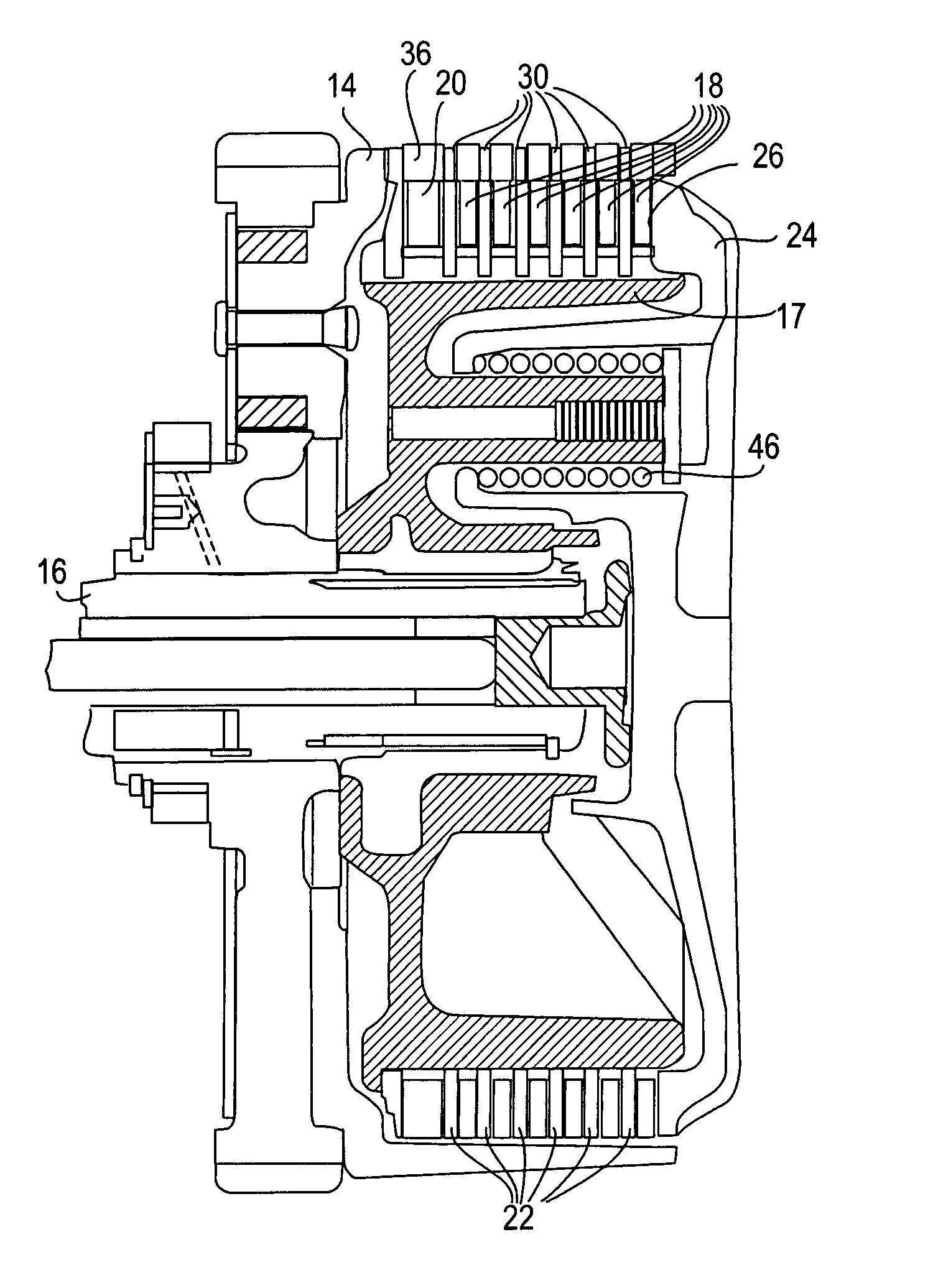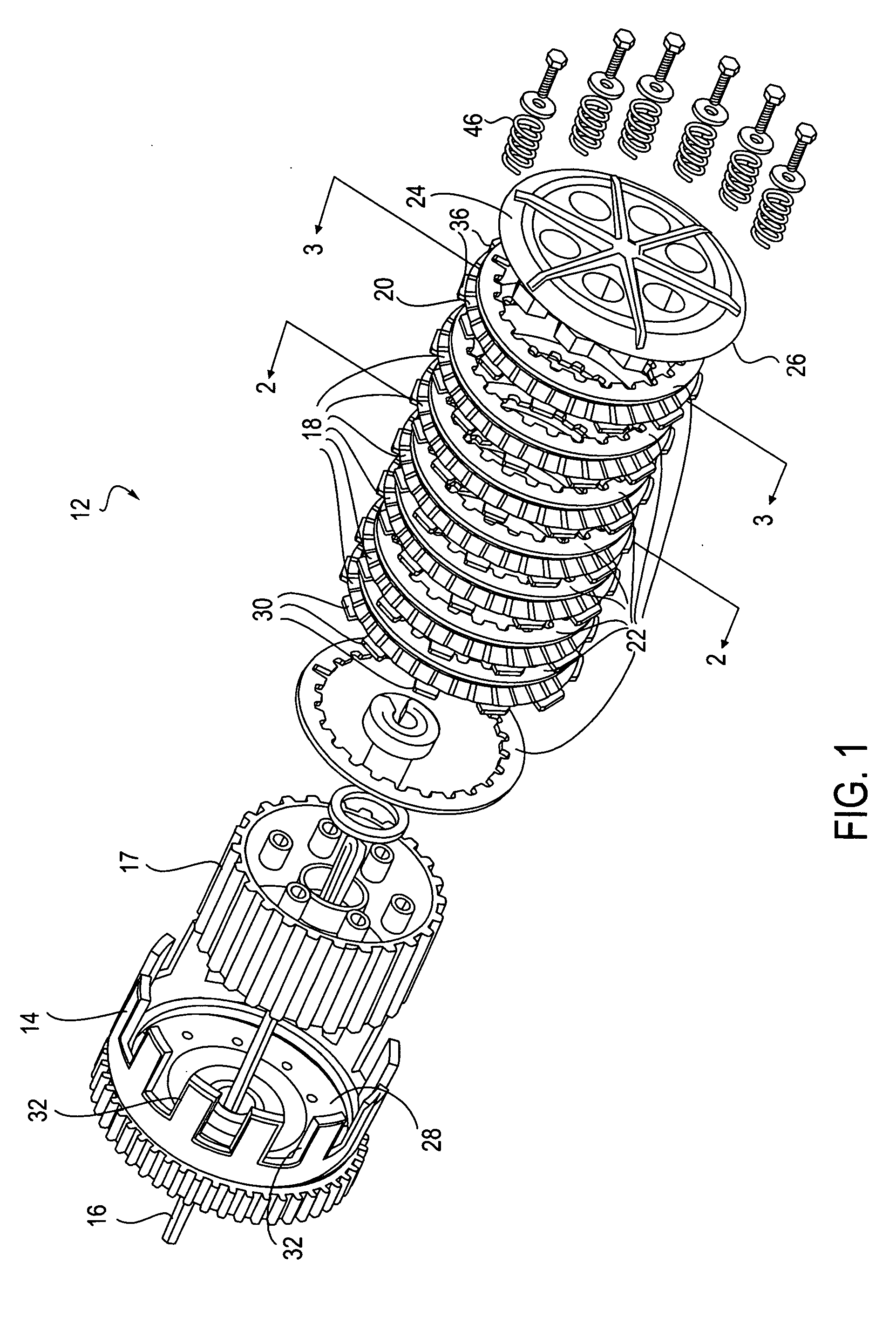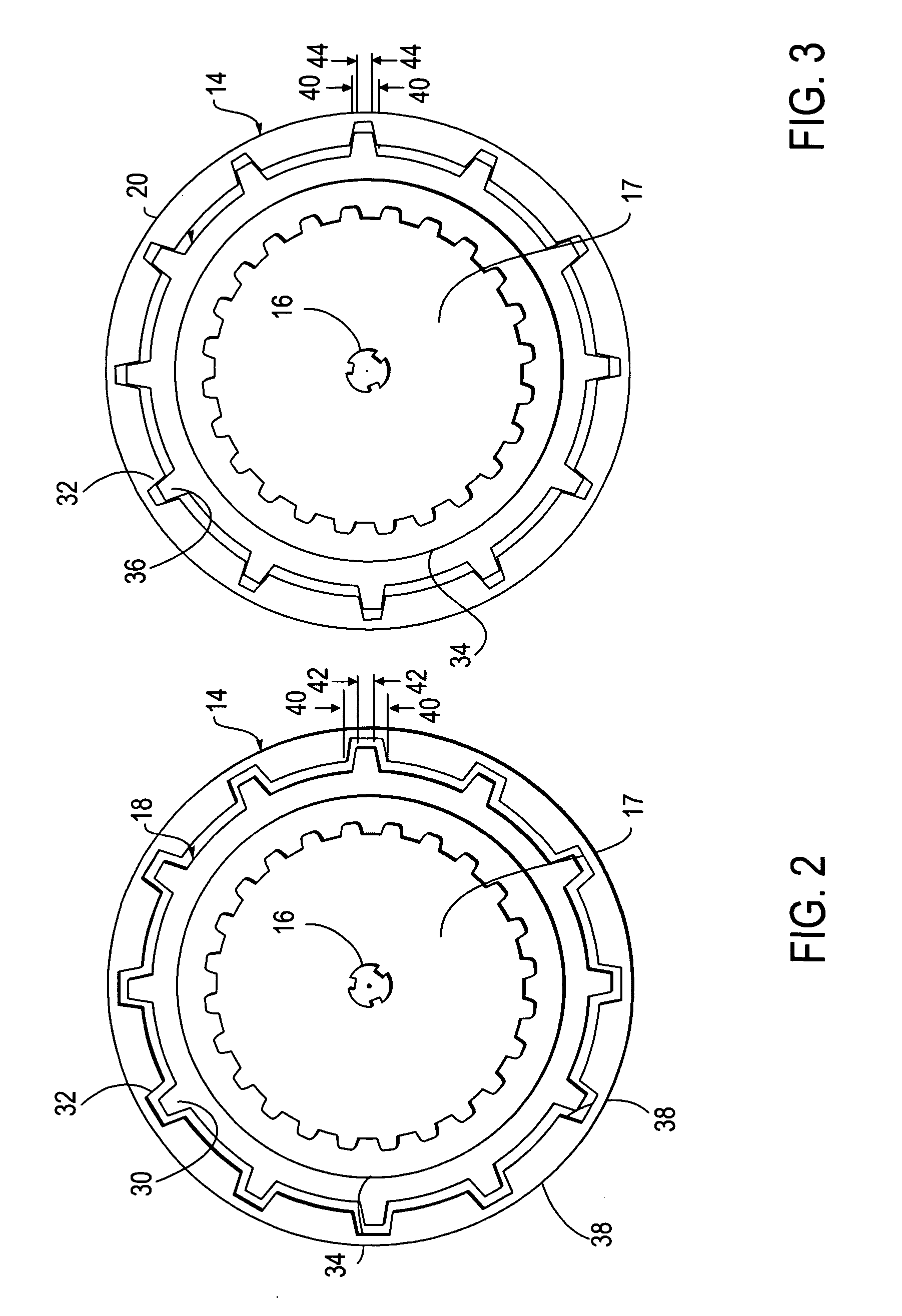Multi-plate clutch
a multi-plate clutch and clutch technology, applied in the field of multi-plate clutches, can solve the problems of engine output undergoing a brief acceleration and deceleration, noise and vibration, engine wear and tear of its component parts, etc., to reduce noise generation, less rotational play, and extend service life
- Summary
- Abstract
- Description
- Claims
- Application Information
AI Technical Summary
Benefits of technology
Problems solved by technology
Method used
Image
Examples
Embodiment Construction
[0023] The multi-plate clutch of the present invention overcomes many of the shortcomings of previously known multi-plate clutch configurations to provide longer service life and quieter operation. The inclusion of a specially dimensioned drive plate, referred to herein as a stabilizer plate, in combination with conventional drive plates serves to rotationally stabilize the entire clutch pack without impeding the clutching and declutching operations. By stabilizing the relative rotational movements of interacting components, the force of the impacts between the engaging surfaces of such components is greatly reduced to yield a commensurate reduction in damage and wear that would otherwise invariably result with use. The reduction in impact forces additionally serves to reduce the hammering noise that would otherwise be generated.
[0024]FIG. 1 is an exploded perspective view of a preferred embodiment of the present invention. The multi-clutch 12 serves to interruptably transfer torqu...
PUM
 Login to View More
Login to View More Abstract
Description
Claims
Application Information
 Login to View More
Login to View More - R&D Engineer
- R&D Manager
- IP Professional
- Industry Leading Data Capabilities
- Powerful AI technology
- Patent DNA Extraction
Browse by: Latest US Patents, China's latest patents, Technical Efficacy Thesaurus, Application Domain, Technology Topic, Popular Technical Reports.
© 2024 PatSnap. All rights reserved.Legal|Privacy policy|Modern Slavery Act Transparency Statement|Sitemap|About US| Contact US: help@patsnap.com










